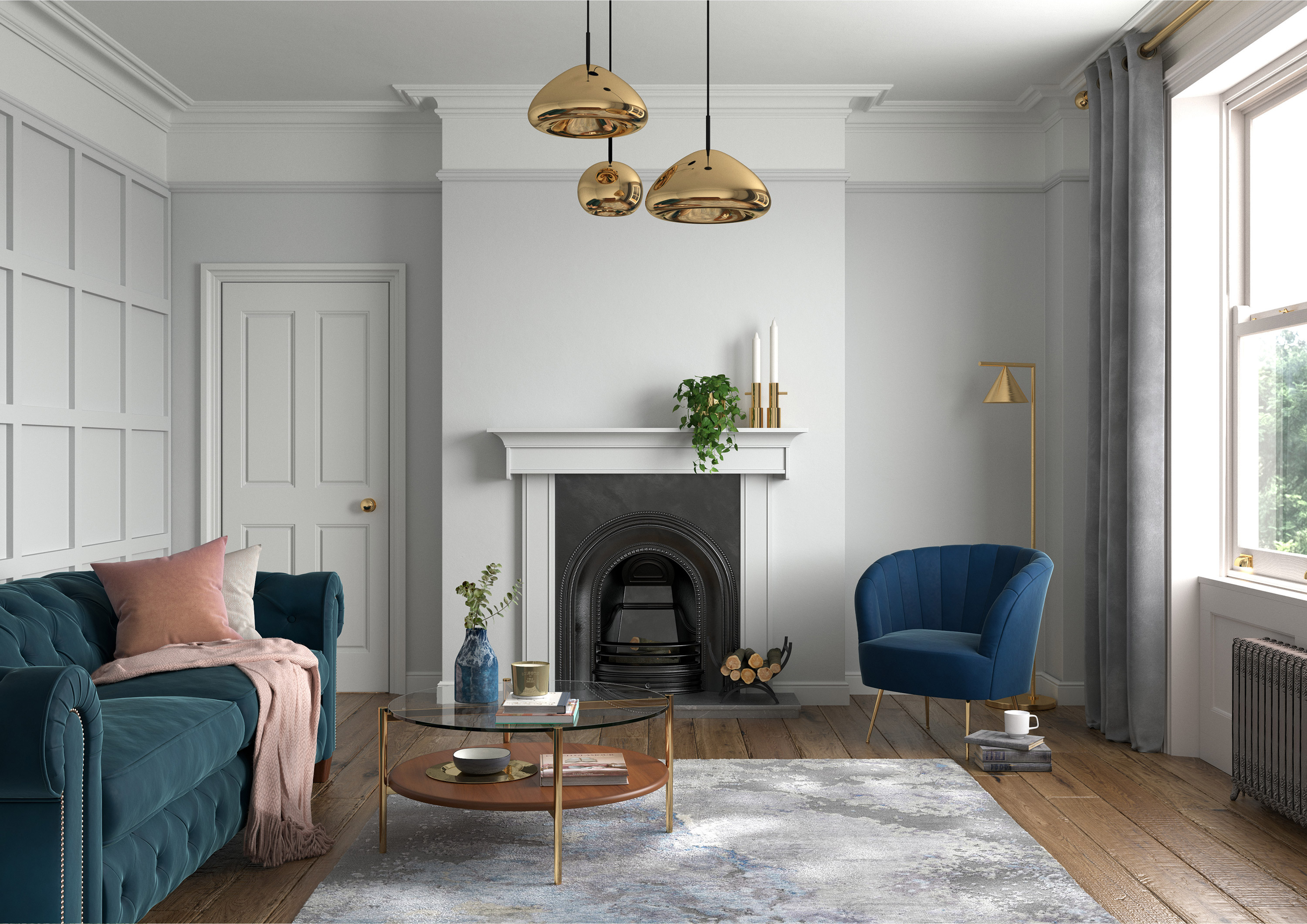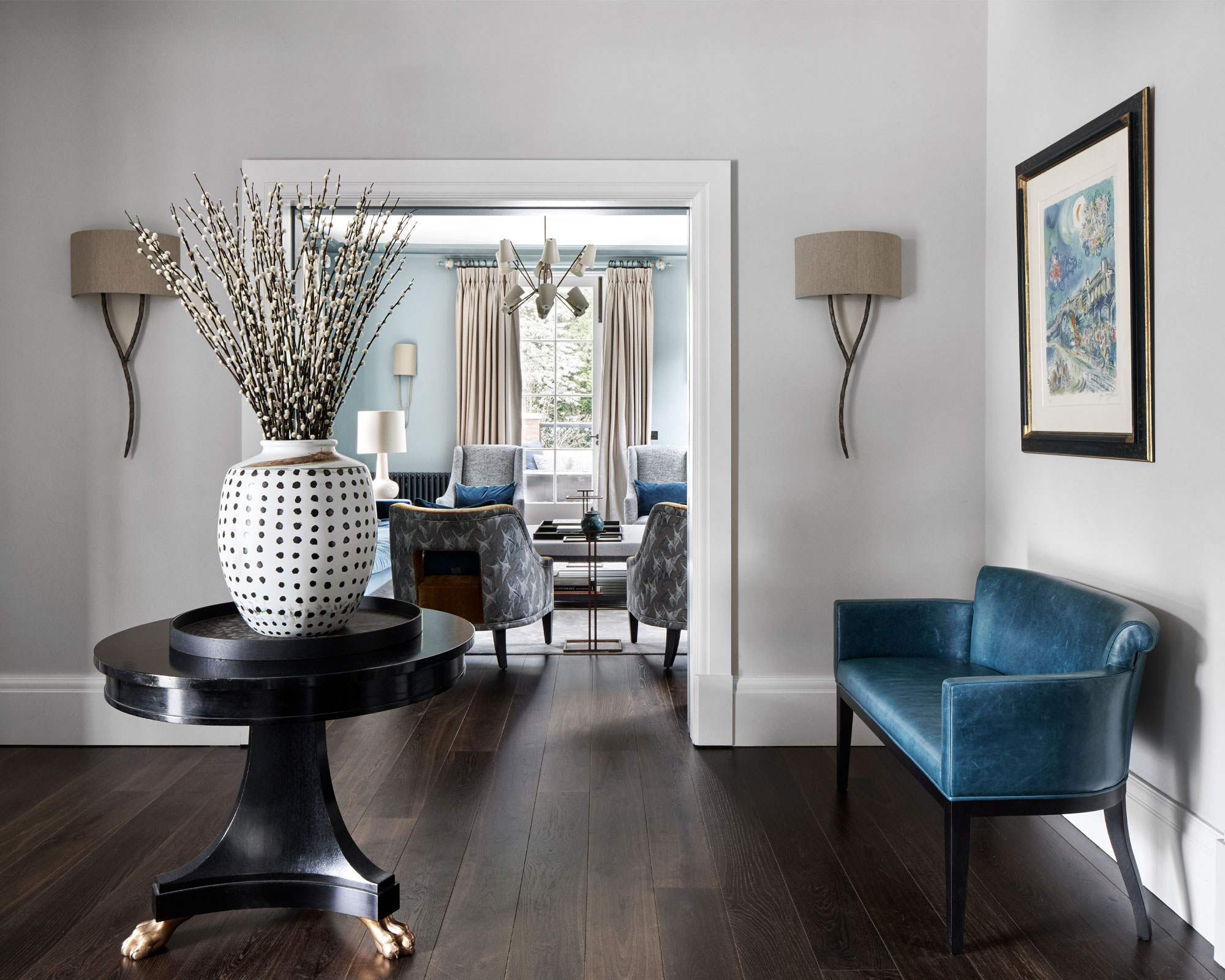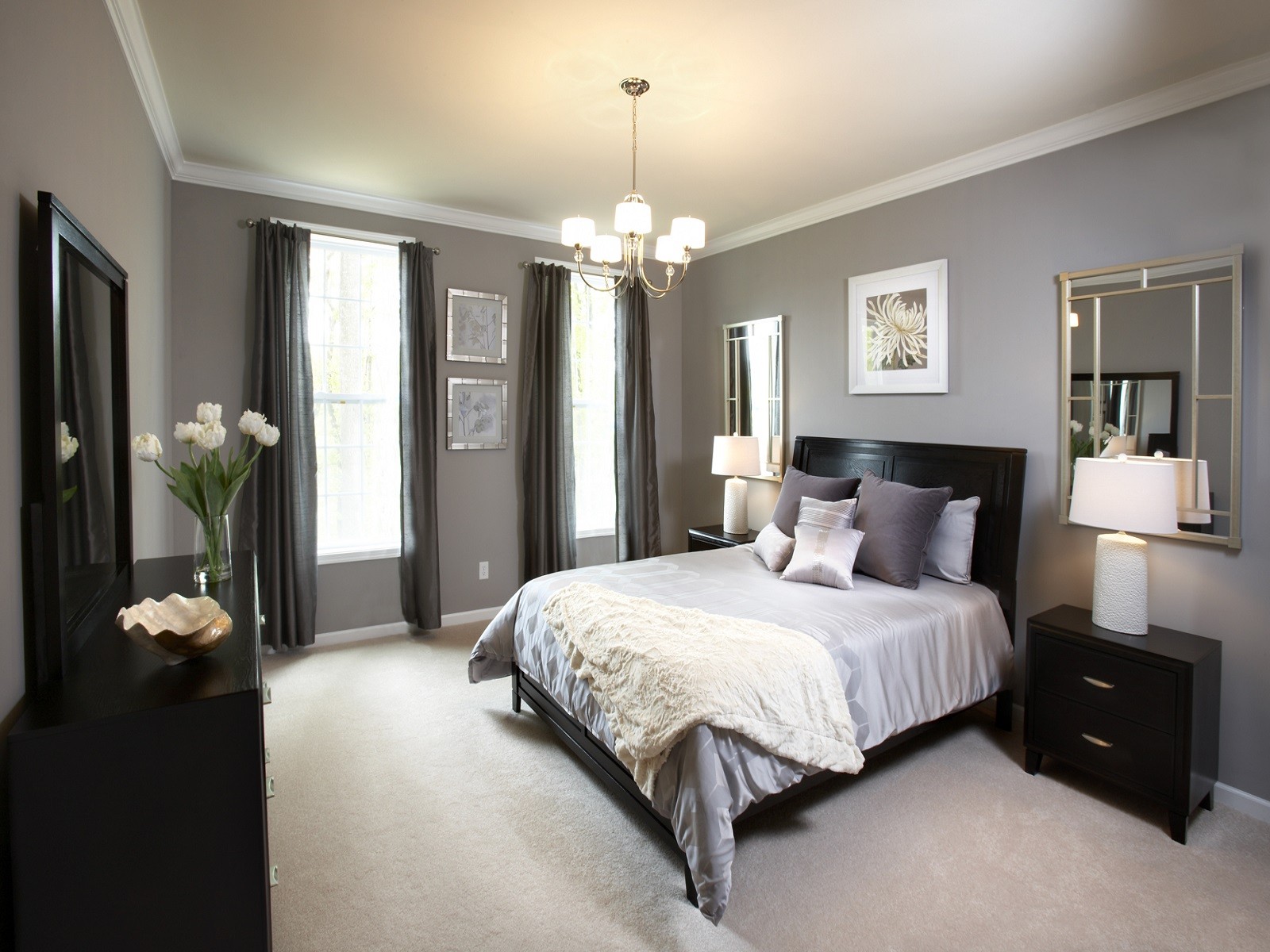Choosing the Right Grey Shade: Grey Bedroom Paint Ideas Uk

Grey is a versatile colour that can create a range of moods in a bedroom, from calming and serene to sophisticated and modern. The key to choosing the right shade of grey is understanding its undertones and how they affect the overall atmosphere of the room.
Understanding Grey Undertones
Grey paint colours often have underlying tones of blue, purple, green, or yellow, which can subtly influence the perceived colour and the mood it evokes.
- Cool Greys: These greys contain blue or purple undertones, making them feel crisp, clean, and sophisticated. They can also make a room feel larger and cooler. Examples include Farrow & Ball’s “Down Pipe” and Dulux’s “Pavilion Grey.”
- Warm Greys: Warm greys have yellow or red undertones, creating a cosy and inviting atmosphere. They can make a room feel more intimate and welcoming. Examples include Little Greene’s “French Grey” and Crown’s “Stone Grey.”
- Neutral Greys: These greys have minimal undertones and appear balanced, creating a timeless and versatile backdrop. Examples include Benjamin Moore’s “Gray Owl” and Valspar’s “Silver Strand.”
Grey Shades and their Impact on Mood
The chosen shade of grey can significantly impact the mood of a bedroom.
| Grey Shade | Light Reflection | Mood | Suitability for Room Size |
|---|---|---|---|
| Light Grey | High | Calming, airy, spacious | Small to large rooms |
| Medium Grey | Moderate | Serene, sophisticated, balanced | Medium to large rooms |
| Dark Grey | Low | Dramatic, intimate, cosy | Large rooms |
Grey Bedroom Design Ideas

A grey bedroom can be a versatile and stylish canvas for a range of design styles. From minimalist to modern, traditional to Scandinavian, grey provides a neutral backdrop that allows you to express your personal style through furniture, accessories, and accents.
Grey Bedroom Design Styles
Grey bedrooms can be styled to reflect a variety of design aesthetics, each with its own unique characteristics and appeal.
- Minimalist Grey Bedroom: A minimalist grey bedroom emphasizes simplicity and functionality. Clean lines, a limited color palette, and a focus on essential furniture are key elements. The grey walls serve as a backdrop for a few carefully chosen pieces, such as a sleek bed frame, a minimalist nightstand, and a simple desk. Minimalist grey bedrooms often incorporate natural materials like wood and linen, creating a sense of calm and serenity.
- Modern Grey Bedroom: Modern grey bedrooms are characterized by clean lines, geometric shapes, and a focus on functionality. The grey walls can be paired with bold accents like a statement headboard, geometric artwork, or a vibrant rug. Modern grey bedrooms often feature contemporary furniture with sleek lines and minimalist designs.
- Traditional Grey Bedroom: Traditional grey bedrooms embrace classic elements and a sense of timeless elegance. The grey walls can be complemented by rich wood furniture, patterned textiles, and traditional lighting fixtures. The use of soft textures and warm tones creates a sense of comfort and sophistication.
- Scandinavian Grey Bedroom: Scandinavian grey bedrooms are characterized by a light and airy feel, with a focus on natural materials and simplicity. The grey walls are often paired with white accents and natural wood furniture. Scandinavian grey bedrooms often incorporate natural light, plants, and cozy textiles to create a warm and inviting atmosphere.
Incorporating Textures and Patterns
Grey bedrooms can benefit from the addition of textures and patterns to create visual interest and depth.
- Textures: Incorporating different textures can add visual interest and create a more tactile experience. Consider using textured bedding, a sheepskin rug, or a woven throw blanket. The contrast between smooth and rough textures can add depth and dimension to the space.
- Patterns: Patterns can be used to add visual interest and personality to a grey bedroom. Consider using patterned bedding, curtains, or throw pillows. Geometric patterns, floral prints, or abstract designs can all be incorporated to create a unique and stylish look.
Grey Bedroom Mood Board
Here are some grey bedroom ideas to inspire your design:
Grey Walls: A light grey serves as a neutral backdrop for a variety of furniture and accents.
Bed: A simple bed frame with a headboard in a contrasting color or material adds visual interest.
Nightstands: Sleek nightstands with storage provide functionality and style.
Lighting: A combination of overhead lighting and bedside lamps creates a layered lighting scheme.
Rug: A patterned rug adds warmth and visual interest to the floor.
Accessories: Artwork, plants, and throw pillows add personality and color to the space.
Grey Bedroom Paint Tips

Selecting the perfect grey paint for your bedroom is a crucial step in creating a relaxing and stylish space. The right grey shade can transform your bedroom into a sanctuary, while the wrong shade might leave you feeling gloomy or uninspired. This section explores some key tips to help you navigate the world of grey paint and make informed choices for your bedroom.
Lighting’s Influence on Grey Paint
Lighting plays a crucial role in how grey paint appears in your bedroom. Natural light can make grey appear warmer or cooler depending on the time of day and the direction of the light. Artificial light, such as incandescent or LED bulbs, can also affect the perceived colour of grey.
- Natural Light: Grey paint can appear warmer in the morning and evening when sunlight is softer and redder. Conversely, during midday, when sunlight is more direct and bluish, grey paint can appear cooler. This is because the natural light spectrum changes throughout the day.
- Artificial Light: Incandescent bulbs tend to emit a warmer yellow light, which can make grey appear warmer and more inviting. Conversely, LED bulbs, which emit a cooler white light, can make grey appear cooler and more modern.
Therefore, it is crucial to consider the lighting conditions in your bedroom when choosing a grey paint. Paint samples on the wall and observe how the colour changes throughout the day and under different lighting conditions. This will give you a more accurate representation of how the paint will look in your bedroom.
Painting a Bedroom Effectively, Grey bedroom paint ideas uk
Painting a bedroom effectively requires proper preparation, application, and drying time. Here’s a step-by-step guide to ensure a smooth and successful painting process:
Preparation
- Clear the Room: Remove all furniture, rugs, and accessories from the bedroom. This will provide you with ample space to work and prevent paint splatters.
- Protect the Floor: Cover the floor with drop cloths or plastic sheeting to protect it from paint spills. If you are using a roller, use painter’s tape to mask off areas you don’t want to paint.
- Clean the Walls: Wash the walls with a mild detergent and water to remove dust, dirt, and grime. Allow the walls to dry completely before proceeding to the next step.
- Repair Cracks and Holes: Patch any cracks or holes in the walls with spackle or patching compound. Allow the patching compound to dry completely before sanding it smooth.
- Prime the Walls: Apply a primer to the walls before painting. This will help the paint adhere better and create a smooth, even finish.
Application
- Choose the Right Tools: For large areas, use a roller with a nap that is appropriate for the texture of your walls. For trim and corners, use a brush. Use a paint tray to hold the paint and a roller extension pole to reach high areas.
- Start with a Thin Coat: Apply the first coat of paint in thin, even strokes. Avoid overloading the roller or brush, as this can lead to drips and uneven coverage.
- Allow the Paint to Dry: Allow the first coat of paint to dry completely before applying the second coat. The drying time will vary depending on the type of paint and the temperature and humidity of the room.
- Apply a Second Coat: Apply a second coat of paint to ensure full coverage and a smooth finish. Use the same techniques as the first coat, applying thin, even strokes.
Drying Time
The drying time for paint varies depending on the type of paint, the temperature, and the humidity. Most interior paints take about 2-4 hours to dry to the touch and 24 hours to cure completely.
“Always refer to the manufacturer’s instructions for specific drying times and curing times for your chosen paint.”
Primer for Grey Paint
Priming your walls before painting is essential for a smooth and long-lasting finish. A primer creates a uniform surface that allows the paint to adhere better and prevents the underlying wall from showing through.
- Types of Primers: There are several types of primers available, each designed for specific purposes. For grey paint, a stain-blocking primer is a good choice. It helps to prevent stains from bleeding through the paint and ensures a clean, even finish.
- Choosing the Right Primer: If you are painting over a dark colour, you may need to use a sheen primer to create a smoother surface. For walls with imperfections, use a filler primer to fill in any gaps or cracks.
By selecting the right primer for your specific needs, you can create a beautiful and durable finish for your grey bedroom.
